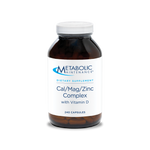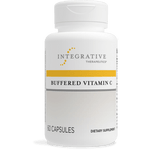Vitamin D is one of the fat-soluble vitamins, along with A, E, and K. Its metabolites can be classified into two families, the cholecalciferols and ergocalciferols. Cholecalciferol (vitamin D3), is the parent of the naturally occurring family and is produced in the skin on exposure to sunlight. The UVB portion of sunlight (290 to 315 nm) converts 7-dehydrocholesterol (provitamin D3) to vitamin D3, cholecalciferol. The liver converts D3 to 25-hydroxycalciferol (25-OH-D).
The main function of vitamin D in the body deals with calcium absorption, transport, deposition and metabolism. Decreased levels can result in symptoms involving disturbed calcium use, nerve and muscle impairment, soft or fragile bones, or if severe enough, in the classic disease called rickets. An excellent source of vitamin D is sunshine on skin, 15 to 20 minutes a day. Other sources of vitamin D are butter, eggs, milk, cod liver oil and cold water fish.
The RDA for vitamin D is 600 I.U. A suggested supplemental level is 600 to 1000 I.U. 2000 I.U./day can lead to toxicity.
Specimen required is 0.5 mL of serum protected from light and mailed in an amber plastic tube.
Doctors who wish to order kits, please call our lab directly to set up an account before ordering. 316-684-7784
- Chesney RW: Current clinical applications of vitamin D metabolite research. 1981; Clinical Orthopedics and Related Research; 161:285.
- DeLuca HF, Schnoes HK: Metabolism and mechanism of action of vitamin D. 1976; Annual Reviews in Biochemistry; 45:631.
- Clemens TL.: Vitamin D: Recent advances in basic research and clinical assay Methodology. 1986; Journal of Clinical Immunoassay; 9(4):183.
- Prece MA, Tomlinson CA, et al: Studies of vitamin D deficiency in man. 1975; Q J Med.;44:575.
- Tietz Textbook of Clinical Chemistry, 3rd Ed., 1999, Saunders Company:p1004
- CPT CODE:
- 82306
- COLLECTION CONTAINER:
- SST or red-stopper tube
- STATE & SHIPPING RESTRICTIONS:
- We cannot ship lab kits to NY, AK, HI, or international
- MINIMUM VOLUME:
- 0.1 mL
- NORMAL VALUES:
- The accepted normal value 40 to 80 ng/mL.
- PATIENT PREP:
- None
- PROCESS METHOD:
- The methodology is by RIA.
- PROCESS TIME:
- 5 to 7 business days
- REJECTION CAUSES:
- Gross Hemolysis
- SPECIAL INSTRUCTIONS:
- None
- SPECIMEN VOLUME:
- 0.5 mL serum; light protected
- SYNONYMS:
- 25-Hydroxycalciferol; 25-OH-D
- TRANSPORT CONTAINER:
- Amber plastic transport tube
- TRANSPORT INSTRUCTIONS:
- Refrigerate or freeze










